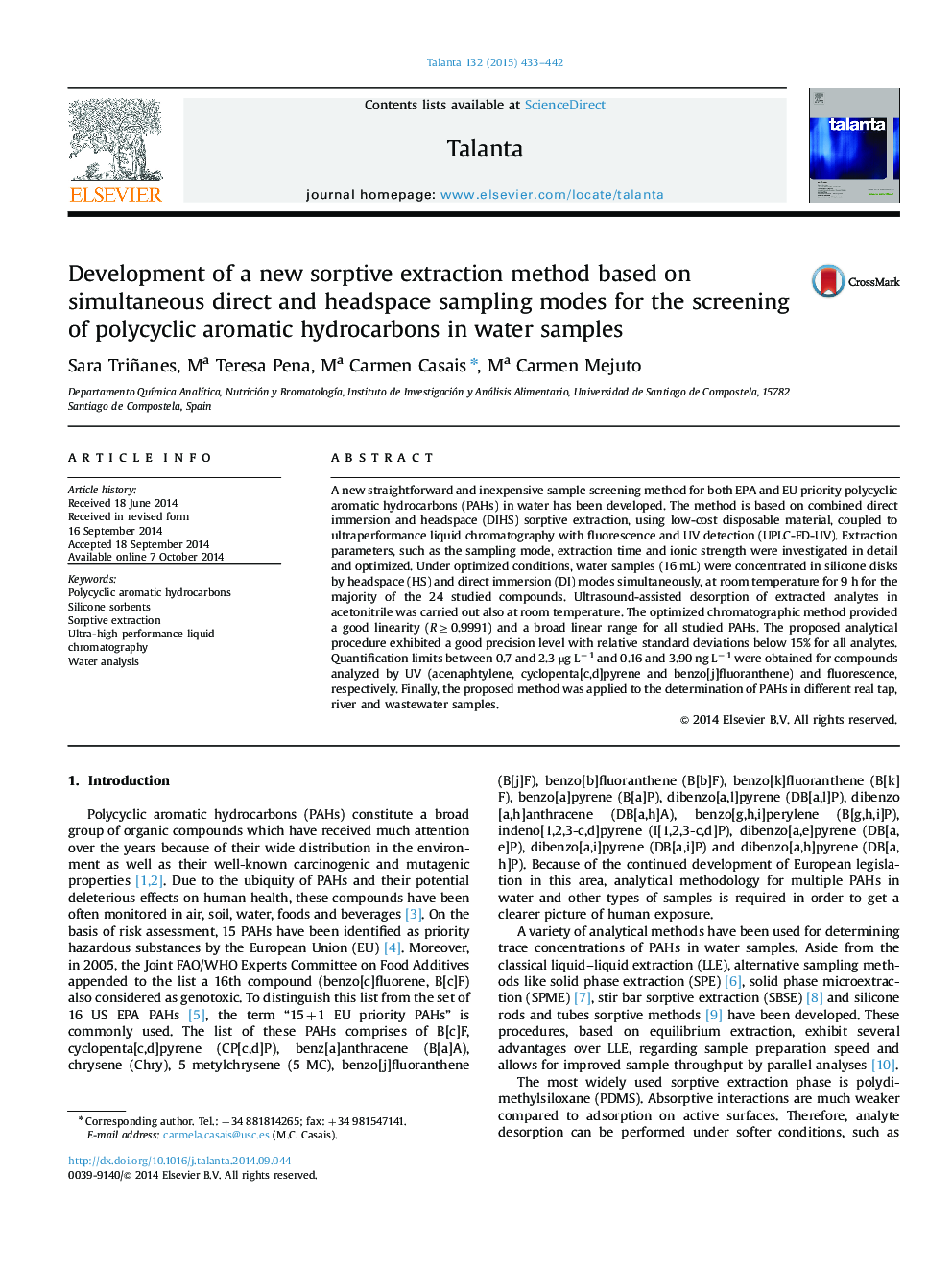| کد مقاله | کد نشریه | سال انتشار | مقاله انگلیسی | نسخه تمام متن |
|---|---|---|---|---|
| 1242037 | 1495803 | 2015 | 10 صفحه PDF | دانلود رایگان |
• One shot sampling of all PAHs included in US-EPA and EU regulations.
• Novel combined headspace and direct immersion sampling mode.
• Optimized UPLC-FD/UV separation-detection of all 24 PAHs considered.
A new straightforward and inexpensive sample screening method for both EPA and EU priority polycyclic aromatic hydrocarbons (PAHs) in water has been developed. The method is based on combined direct immersion and headspace (DIHS) sorptive extraction, using low-cost disposable material, coupled to ultraperformance liquid chromatography with fluorescence and UV detection (UPLC-FD-UV). Extraction parameters, such as the sampling mode, extraction time and ionic strength were investigated in detail and optimized. Under optimized conditions, water samples (16 mL) were concentrated in silicone disks by headspace (HS) and direct immersion (DI) modes simultaneously, at room temperature for 9 h for the majority of the 24 studied compounds. Ultrasound-assisted desorption of extracted analytes in acetonitrile was carried out also at room temperature. The optimized chromatographic method provided a good linearity (R≥0.9991) and a broad linear range for all studied PAHs. The proposed analytical procedure exhibited a good precision level with relative standard deviations below 15% for all analytes. Quantification limits between 0.7 and 2.3 µg L−1 and 0.16 and 3.90 ng L−1 were obtained for compounds analyzed by UV (acenaphtylene, cyclopenta[c,d]pyrene and benzo[j]fluoranthene) and fluorescence, respectively. Finally, the proposed method was applied to the determination of PAHs in different real tap, river and wastewater samples.
Figure optionsDownload as PowerPoint slide
Journal: Talanta - Volume 132, 15 January 2015, Pages 433–442
